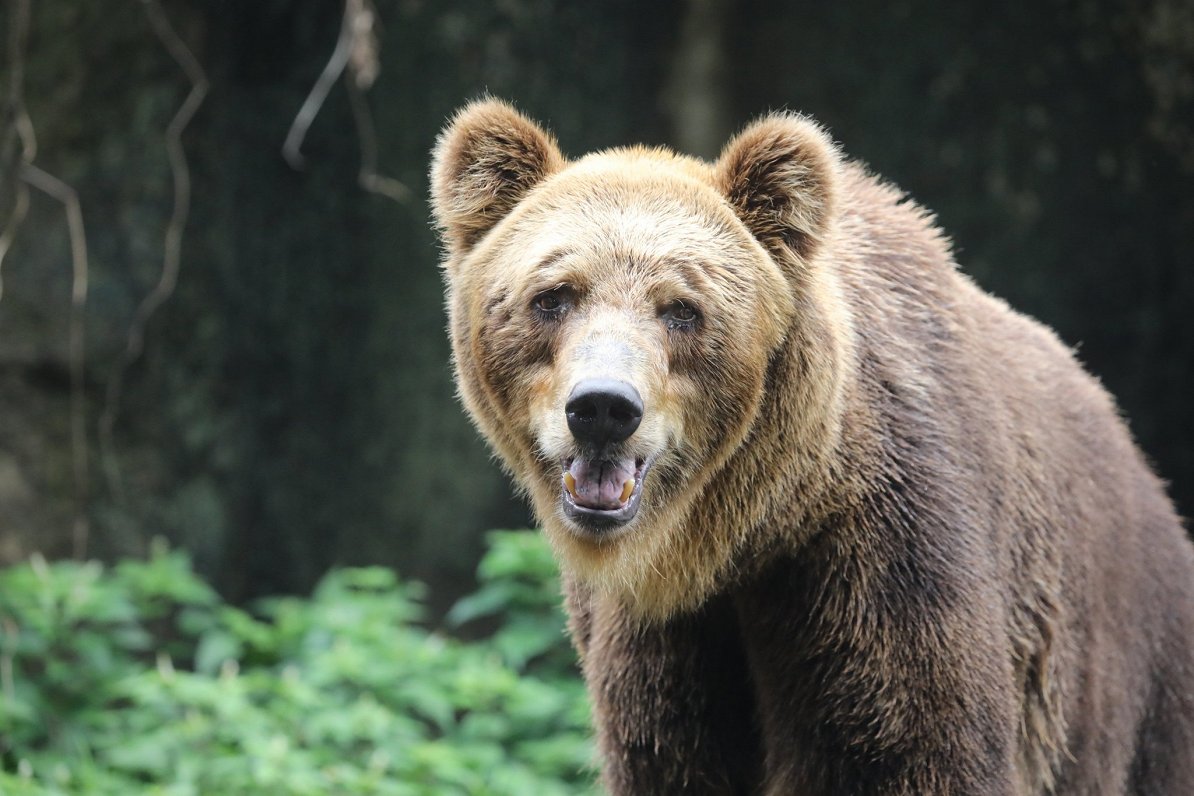The fact that bears live in Vidzeme region is confirmed by the cameras recorded at animal feeders, and many Vidzeme residents have also seen the forest dweller or his tracks themselves, as well as seeing the results of bear visits to beehives.
Arturs Vīksne, the owner of the “Krogdambji” farm in Aloja parish has been protecting his bee colonies, which are located both next to the house and at the edge of the forest, with the help of an electric fence powered by solar panels.
“I had batteries for the first year, and then it happened that within a month the battery is empty and you have to take it to charge again, but here [with the panels] it’s just wonderful,” Arturs says.
And while the apiary is guarded in such a way, the bears have not caused any problems. appeared here either:
“It has a sound and the plus is that there are lights on the back – flashing both green and blue. I think that bear just hears the sound because there are ticks all the time and he doesn’t come.”
Bears were once frequent visitors to this farm and destroyed 15 bee colonies. Many repellent methods were tried before this solution was found.
“I burned all sorts of smelly substances that I could think of in the evenings, but in the morning I look and the bear was there, so I put up not barbed wire, but very sharp wire from the army, the bear came and he is so smart, he didn’t touch it, he didn’t grab it, but [crept] through the gap,” Arturs recalls.
Ieva Kreišmane, the owner of the Vilzēni agricultural machinery store, also says that beekeepers choose the help of an electric fence as a solution to protect their bee colonies.
“Our biggest sales for electric fences are not for cows, but for bears. I think it helps everyone who makes honey a lot, because when they come, they tell us that this is the best solution right now.”
The fact that bears are indeed not uncommon in this area is also confirmed by Aloja parish hunter Valdis Čečiņš:
“We meet quite a few here, especially on the old railway. Many go for walks there, and those bears also move there. I have two daughters and a son, both daughters have seen a bear walking along that railway.”
Ieva Kreišmane also says that large bear tracks have been seen near her family’s shop and this coexistence with the forest king has also encouraged her to invent a special whistle called “Lāčbiedis” (“Bearscare”).
“It’s a whistle for self-protection when walking in the forest, picking berries, mushrooms, your whistling friend. That’s what I’d like to call it,” explains Ieva. “I got the idea for it from the fact that we have bears, wolves around and all sorts of other predatory animals. And then it wasn’t comfortable to go for a walk anymore. I’m not a passionate mushroom or berry picker, but I like walks, and when you see such a huge bear paw, it’s no longer pleasant. My sister went on the Bear Trail in Finland several years ago and there was a whistle on the trees there from time to time, because the animal is also afraid of us – just like we are of them. And if you make your presence known, they won’t come near you.”
“Such an artificially created sound – I admit that it can help,” assesses experienced hunter Jānis Ence. In his opinion, this idea of creating noise while walking in the forest is correct. “This will help to give the animal a signal that there is a nuisance around. So the animal will understand in time that it is necessary to avoid meeting, because just when walking, when there is some kind of crack, a branch breaks, it makes the animal interested in what is happening there. Of course, when walking in the forest, you have to be careful, but animals living in the wild are certainly more alert, their senses are more acute than a person’s. And if the animal is healthy, not injured or otherwise sick, then it is unlikely to attack a person unless the person provokes it.
“I would still recommend buying pepper spray cans, which are available in stores, and carrying them with you. It’s not bad to have some kind of phone sound that you can just turn on while walking, to let the animal understand that it is not some other animal that might interest a predator. Or go and hum something!”
Jānis Ence emphasizes that the chances of a bear approaching a person are small and the main thing is not to provoke them, for example, by trying to photograph a bear when you see it:
“Of course, there are exceptions – there are mothers with children, when you have to be careful… A mother’s instinct, of course, is to protect her children.”
This year promises to be a good harvest of berries. However, Jānis Ence advises berry pickers to be careful, as a bear has been spotted feasting on these berries:
“The bear is omnivorous, and one of its delicacies is raspberries. Most likely, if the bear is nearby, then the probability of seeing the bear there or traces of its activity, that it has feasted, is quite high. We go to the raspberries with a loud song and maybe it would be good to learn not only the first verse, so that the song is longer!”
Since bears are no longer a rarity in our forests and are not a huntable animal, we will just have to live with the forest owner and, when walking in the forest, take care not to encounter them.
Select text and press Ctrl+Enter to send a suggested correction to the editor
Select text and press Report a mistake to send a suggested correction to the editor
Tell us about a mistake
